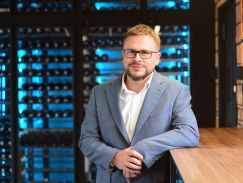Agrоbusiness Today, November 06, 2025
At present, the agribusiness in Ukraine is facing new challenges: climate change, risks linked to getting the acceptable crop yield and market instability. How to not merely stay afloat in these conditions, but also reach the new profitability level? The answer to this question is offered by Credit Agricole Bank — the bank serving over 2500 agrarian customers and possessing a unique expertise in this sector
To support the agrarian producers on their path to the sustainable growth, the bank has offered a range of applicable solutions. We discussed these strategies and their practical advantages with Nataliia Porvina, head of Agribusiness Support and ESG Department, and Ihor Hurzhii, head of Agri-expertise Division. Oleksandr Horda, editor-in-chief of Agribusiness Today media company, asked all the questions.
Would you share how ESG came to be in Credit Agricole Bank, the key ambitions of the bank within the sustainable development strategy?
Nataliia Porvina: Credit Agricole Bank is renowned for its unique agri-expertise — 10 years ago, the agrarian department was created. Among our staff, there are colleagues with agronomist and veterinarian education backgrounds. When we talk to customers, we don’t limit ourselves to only discussing banking products or financing, we also analyze in-depth what the company produces, what technologies it is using, the reality in the field. That is why our colleagues spend a lot of time in the fields.

Nataliia Porvina, head of Agribusiness Support and ESG Department of Credit Agricole
Agribusiness is among the key sectors for both Credit Agricole Group and our bank in Ukraine. Our mission — is to not just be a banking service leader, but to change and transform the market.
Sustainable development is organically built into our development. 5–6 years ago, we started focusing on it more, we started discussing with our customers the technologies they use and the challenges posed by the climate change. That is why climate risks analysis is one of the core parts of our expertise. At the end of 2023, we decided to implement it in the bank’s strategy.
Three main areas of sustainable development
Nataliia Porvina:
We defined three main areas in our strategy:
- Center of expertise. Our mission is to not only become the center of expertise in the banking sector, but to propel the entire agrarian market towards change. We take part in specialized events, share our expertise and offer consultations for our customers. Our goal is to teach the market how to transform and move towards sustainable growth.
- Sustainable financing. We accentuate the products helping companies transform their business on the way to sustainable growth. It means financing projects that reduce climate risks, increase production effectiveness and favour the natural resources preservation.
- Risk assessment. Our mission is to not only detect the risks, but also provide recommendations and offer incentives for change. We explain why climate change matters now, the risks it poses and how to mitigate them. Our task is to show the benefits of sustainable development specifically for the agribusiness.
Ihor Hurzhii:
Sustainable development in the agrarian sector has now become an integral mechanism for the banks. Doing agribusiness without sustainable practices poses significant risks, just like financing such a business. So, we teach and support our customers on their path towards change. It is needed to build a stable economy.
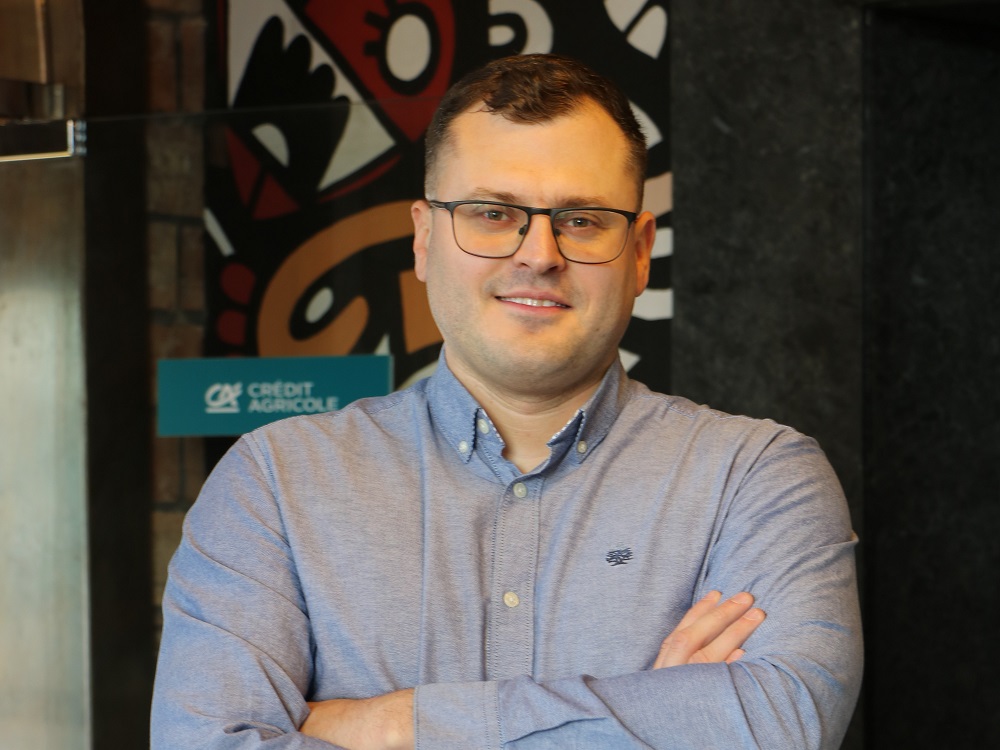
Ihor Hurzhii, head of Agri-expertise Division of Credit Agricole
Practical tool: questionnaire
Nataliia Porvina: Our agrarian experts jointly with ESG specialists developed a specialized questionnaire, that we adapted as much as possible to the agribusiness reality. Our approach is special thanks to us considering the situation not from the theoretical perspective, but from the perspective of added value for the agrarian producer. When we detect risks, we don’t merely talk about them, but develop a plan for the company to improve the situation.
Ihor Hurzhii: The questionnaire is adapted to different types of producers: those who only grow crops, those who only raise livestock, those who do both, and for processing companies. Our customers get a specialized questionnaire, which saves them time. After it is filled, the customer’s rating is formed, which is then used for two purposes:
- Internal analysis: we determine a customer’s risk level in terms of environmental, social and governance factors. Thus, we are able to monitor our portfolio and finance customers that uphold the high standards.
- If we detect risks, we provide a corrective action plan with recommendations. Our approach is pragmatic, aimed at creating the added value for the customers.
As an example, we recommend developing a procedure for processing complaints and proposals from the local population or final consumer of their product. This enhances communication, makes it transparent and increases company loyalty, resulting in positive effect on its business reputation and stability.
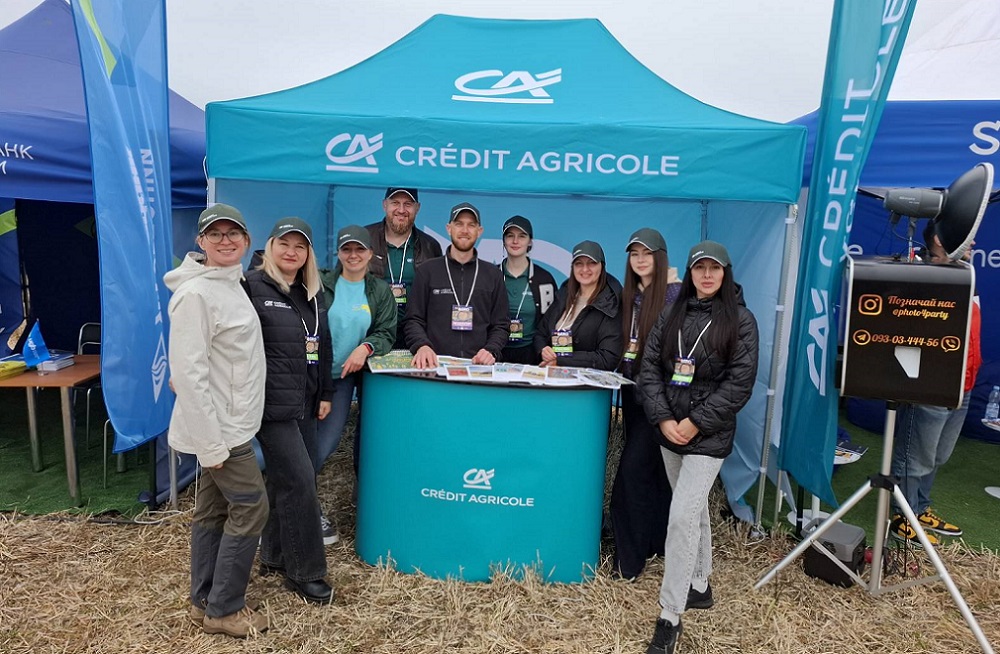
Credit Agricole agrarian team
Cooperation with partners and financing
Tell us about the results of cooperation of Credit Agricole Bank and international organizations in terms of attracting investments and financing environmental projects. Maybe, you can share some figures.
Nataliia Porvina: Our financing of the agrarian producers amounts to about UAH 8 billion. We take part in programs by international organizations such as the EBRD, IFC, where we prioritize financing the companies that chose the path of sustainable development. Additionally, we develop our in-house programs, such as climate change adaptation program.
We actively develop partner programs — they now surpass 70. Under these programs, we cooperate with agrarian machinery producers seeking to change the technology to no-till* and strip-till*, that help the companies adapt to climate change, reducing the negative effect on the soil and improving efficiency. We also finance solar power station projects that enable agrarian producers lower expenses on electric power and become more energy-independent.
We practice a comprehensive approach: we meet with the company, explore their current needs and discuss their strategic goals. Therefore, we propose comprehensive financing that may be comprised of various parts. Our mission is to propel the market towards change, so we also hold educational events. Recently, an experience exchange between Ukrainian and French agricultural producers was organized: twenty customers of the bank — representatives of small and medium-sized agribusinesses — made a study trip to regional bank Crédit Agricole Val de France. In particular, they studied the possibilities of biogas, as it is a promising area for generating additional income and solving waste problems.
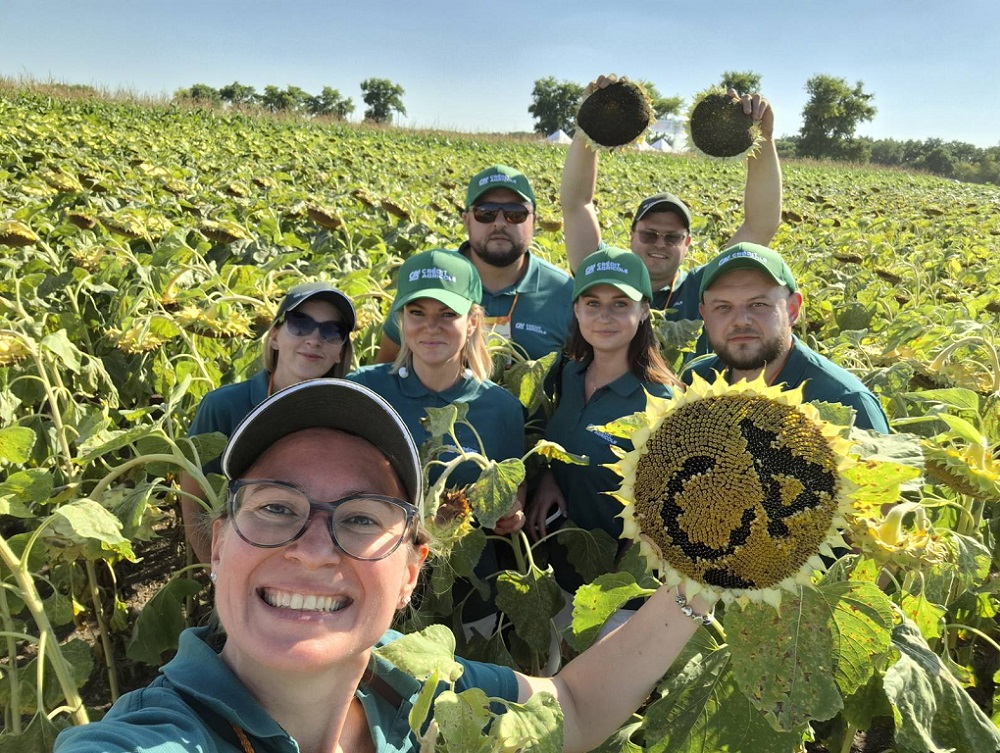
No-till * — no-till cultivation technique, which involves direct sowing of seeds into the stubble of the previous crop with minimal soil disturbance, using mulch from plant remains to protect the soil and preserve moisture.
Strip-till * — minimal tillage technology that combines elements of no-till and traditional technology, cultivating only narrow strips of soil for future crops with simultaneous fertilizer application, while the between-rows are not cultivated.
Climate change adaptation program for agriculture
Tell us more about climate change adaptation program.
Ihor Hurzhii: We launched this program in January 2025 together with eAgronom, an agri-tech company focused on climate solutions, and Agrosem LLC. This joint initiative provides Ukrainian farmers with sustainable solutions, financial support, and opportunities in the carbon certificate market.
Agricultural producers who take steps to adapt to climate change are given the opportunity to enter into a five-year contract. What benefits does this provide?
- Stability and manageability: companies become more predictable in their yields and production costs, which allows for better business planning.
- Additional income: the opportunity to receive carbon certificates. The amount of income from the sale of these certificates varies depending on the changes made by the client. If the company switches from plowing to no-tillage technique and grows green manure crops, it receives maximum benefit. The total amount of payment for these certificates can even cover the cost of certain agricultural equipment. This is an indirect benefit from the stabilization of yields, its predictability and lower production costs in case of technology changes. In this system, each participant performs its function. As a bank, we finance the needs identified within the program.
If we talk about the results of this program, we offered it to 15 agricultural producers, and 1.5 thousand hectares of the land bank have already been included in the program. We see that there is demand for this program, because it is a real tool that enables farmers to adapt to climate change and be more stable and profitable in the future.

Additional opportunities and prospects
What opportunities for renewable energy financing does Credit Agricole Bank offer? What are these companies?
Nataliia Porvina: Following the demand of our customers and the market, we are expanding the list of companies involved in such projects. The market used to be shaped by projects for large companies, small agricultural producers were excluded from the program, and we are changing this. For example, regarding the production and use of biogas, with our support, medium and small agricultural enterprises were invited to visit French enterprises to observe and learn from their experience.
The market is progressing gradually. Big companies have more options to access resources and implement projects. Mission of Credit Agricole Bank is to give smaller agrarian companies the opportunity and financial resources for growth, so that they could be more competitive and effective.
What are Credit Agricole Bank’s plans for development?
Nataliia Porvina: We are constantly thinking about new products, analyzing and calculating potential risks. Our mission is to move the market together with other participants. We study the best experience of our Group, their products and, taking into account their practice and Ukrainian realities, develop new offers. We are also active participants in conferences and thematic Field Days, where we talk about the relevant products of the bank and share our experience with agrarian producers.
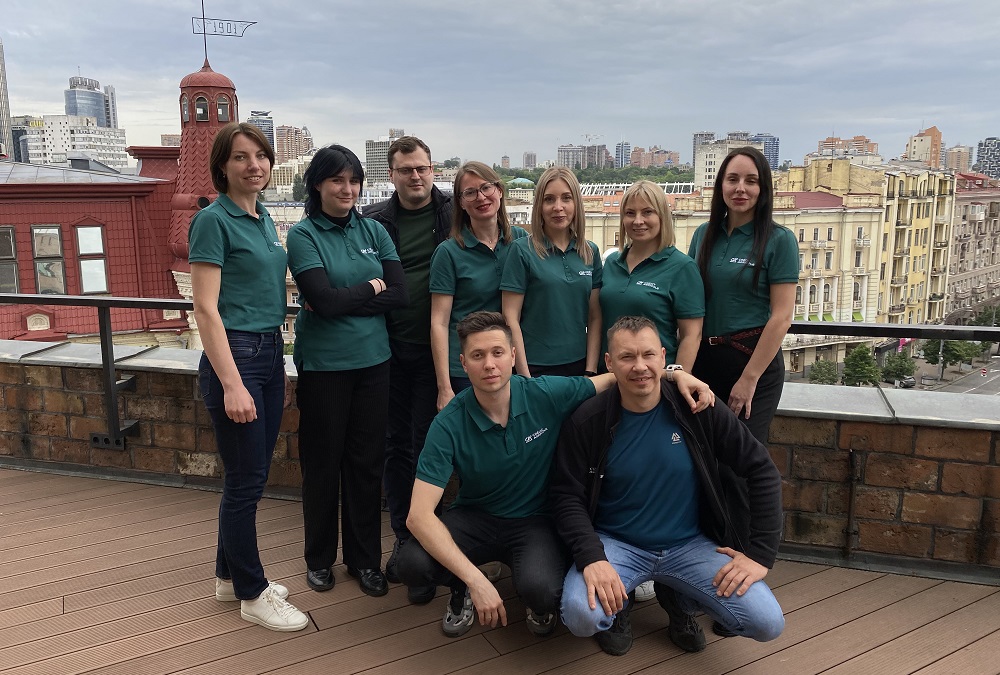
Could you share your message for the agribusiness?
Ihor Hurzhii: The market is changing, influenced by the climate, technologies, financing products. Working with Credit Agricole Bank, each agrarian producer receives the needed financial instrument to take advantage of everything the market has to offer!
We would like to thank Credit Agricole Bank for the unique opportunities they offer the agrarian business. The climate change is not a risk, but a new chance for growth. Together with Credit Agricole Bank, you can overcome these obstacles and take your business to the new level.


 Useful information
Useful information
 Useful information
Useful information
 Useful information
Useful information
 Useful information
Useful information
 Useful information
Useful information
 Useful information
Useful information
 Useful information
Useful information
 Useful information
Useful information
 Useful information
Useful information
 Useful information
Useful information
 Useful information
Useful information
 Useful information
Useful information
 Useful information
Useful information
 Useful information
Useful information
 Useful information
Useful information








